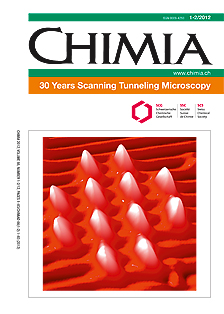Electrochemical Scanning Tunneling Microscopy
DOI:
https://doi.org/10.2533/chimia.2012.44Keywords:
Anion adsorption, Electrochemistry, Metal electrodes, Scanning tunneling microscope, Solid–liquid interfaceAbstract
The electrochemical scanning tunneling microscope was the first tool for the investigation of solid–liquid interfaces that allowed in situ real space imaging of electrode surfaces at the atomic level. Therefore it quickly became an important addition to the repertoire of methods for the determination of the local surface structure as well as the dynamics of reactions and processes taking place at surfaces in an electrolytic environment. In this short overview we present several examples to illustrate the powerful capabilities of the EC-STM, including the observation of clean metal surfaces as well as the adsorption of thin metal layers, specifically adsorbed anions and non-specifically adsorbed organic cations. In several cases the electrode potential has a significant influence on structure and reactivity of the surface that can be explained by the observations made with the EC-STM.Downloads
Published
2012-02-29
Issue
Section
Scientific Articles
License
Copyright (c) 2012 Swiss Chemical Society

This work is licensed under a Creative Commons Attribution-NonCommercial 4.0 International License.
How to Cite
[1]
K. Gentz, K. Wandelt, Chimia 2012, 66, 44, DOI: 10.2533/chimia.2012.44.







